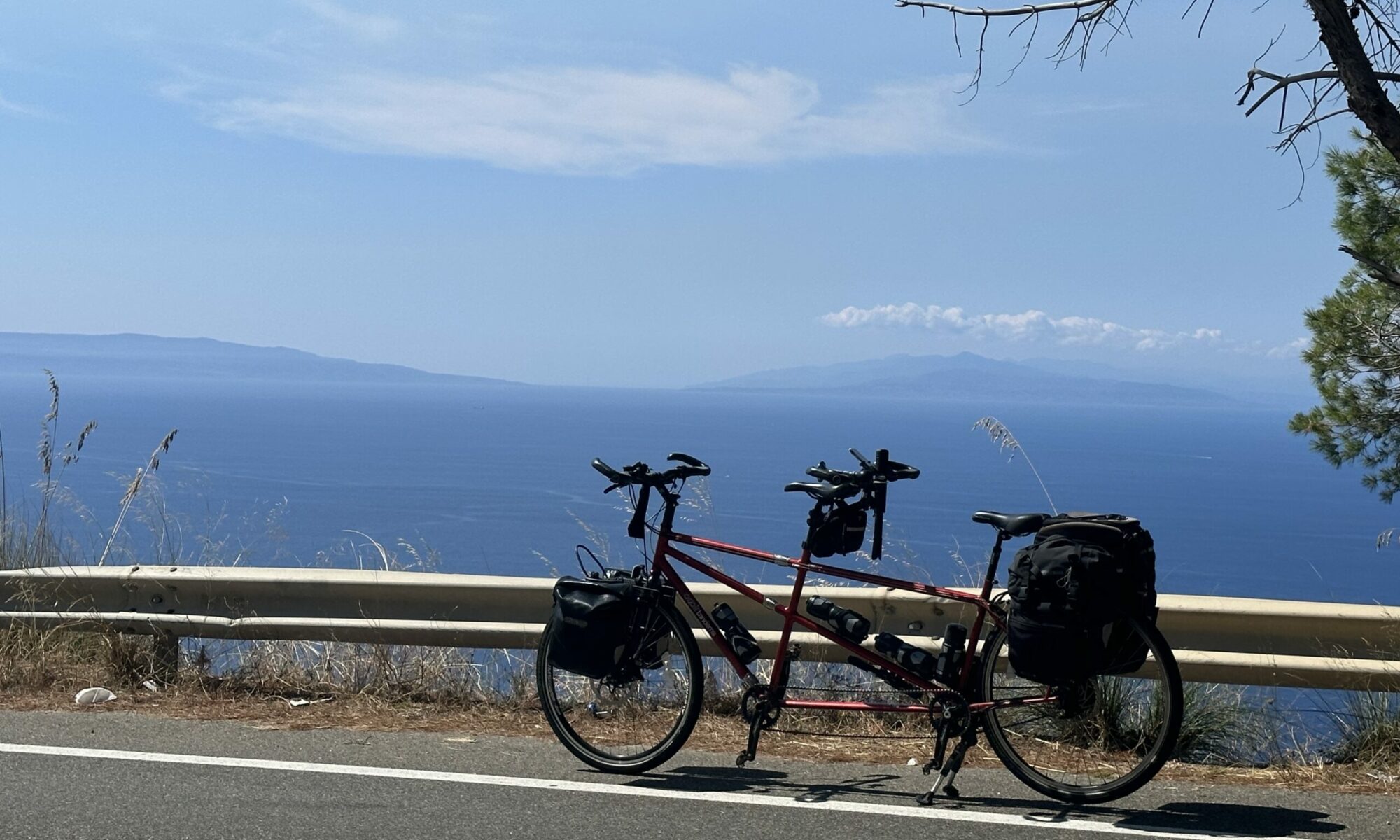A flight of just over three hours took us south, down the Indian mainland. In most places it was barely lit, the light pollution a fraction of that visible in Europe. Arrival in Sri Lanka was efficient, and a driver was waiting to whisk us to our accommodation.
Villa Hundira sits ‘twixt lagoon and sea, a few kilometres south of Negombo. It being almost midnight, there was just enough time to say hello and walk to our room, beside a tempting-looking pool.
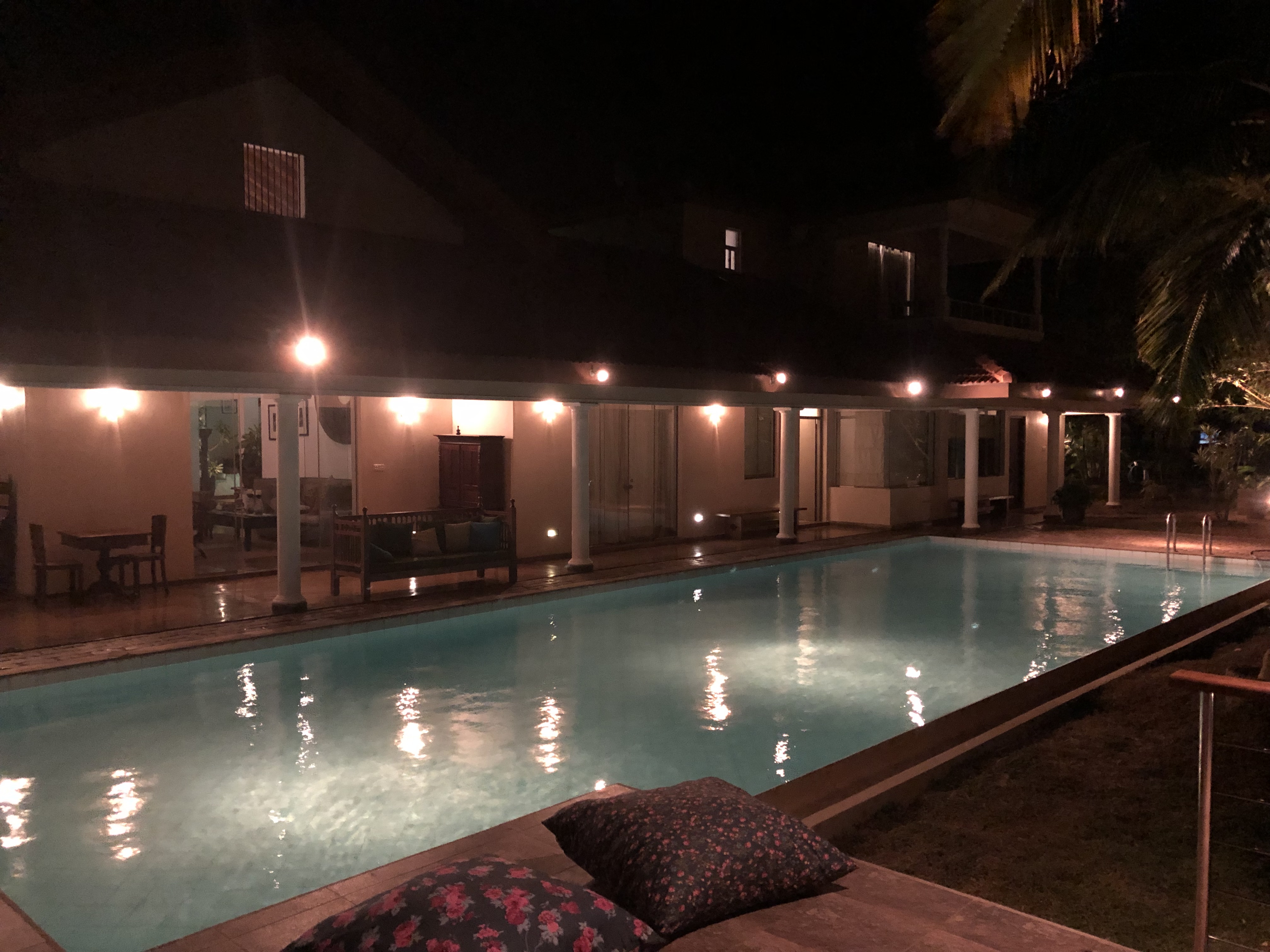
We have visited Sri Lanka before, in the late nineties. Then, it was still a country of internal conflict between Sinhalese and Tamils, although the conflict was largely confined to the north and east of the country. We only stayed for a few days, as our holiday then included some time in the Maldives. We found it a friendly and enchanting place, though, and resolved to come back and tour the island properly.
This, though, isn’t that trip (it’s still on the list!). Our intent here was to relax after a busy week in India, and it worked beautifully. When we awoke we realised that not only were we right by the pool, but we also had a great view over the lagoon. In the distance, intermittently, we could see planes taking off from Colombo airport. In the immediate vicinity, all was green! Palm trees, bamboo and frangipani dominate the beautifully kept grounds, which even include its own mangrove.
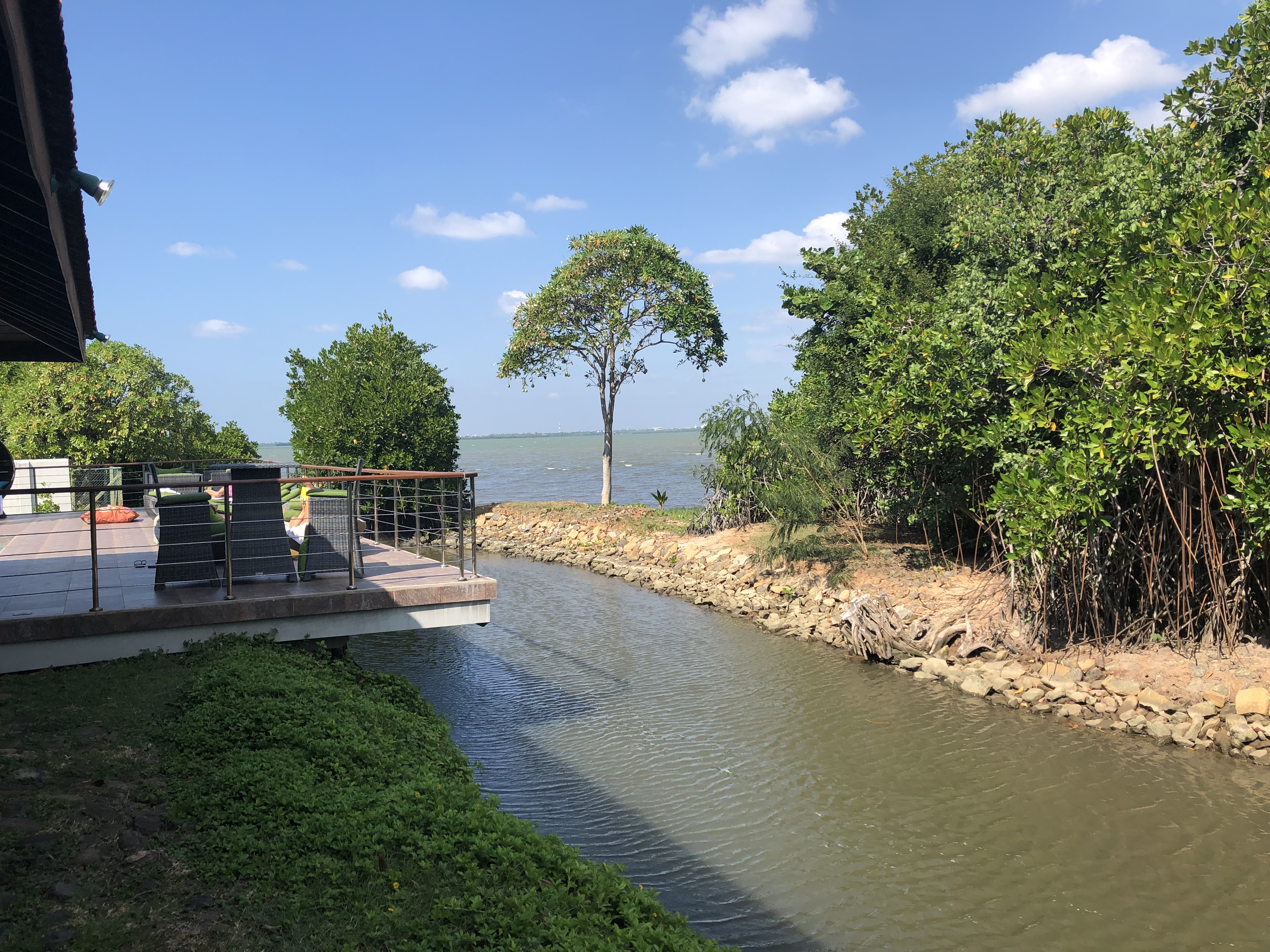
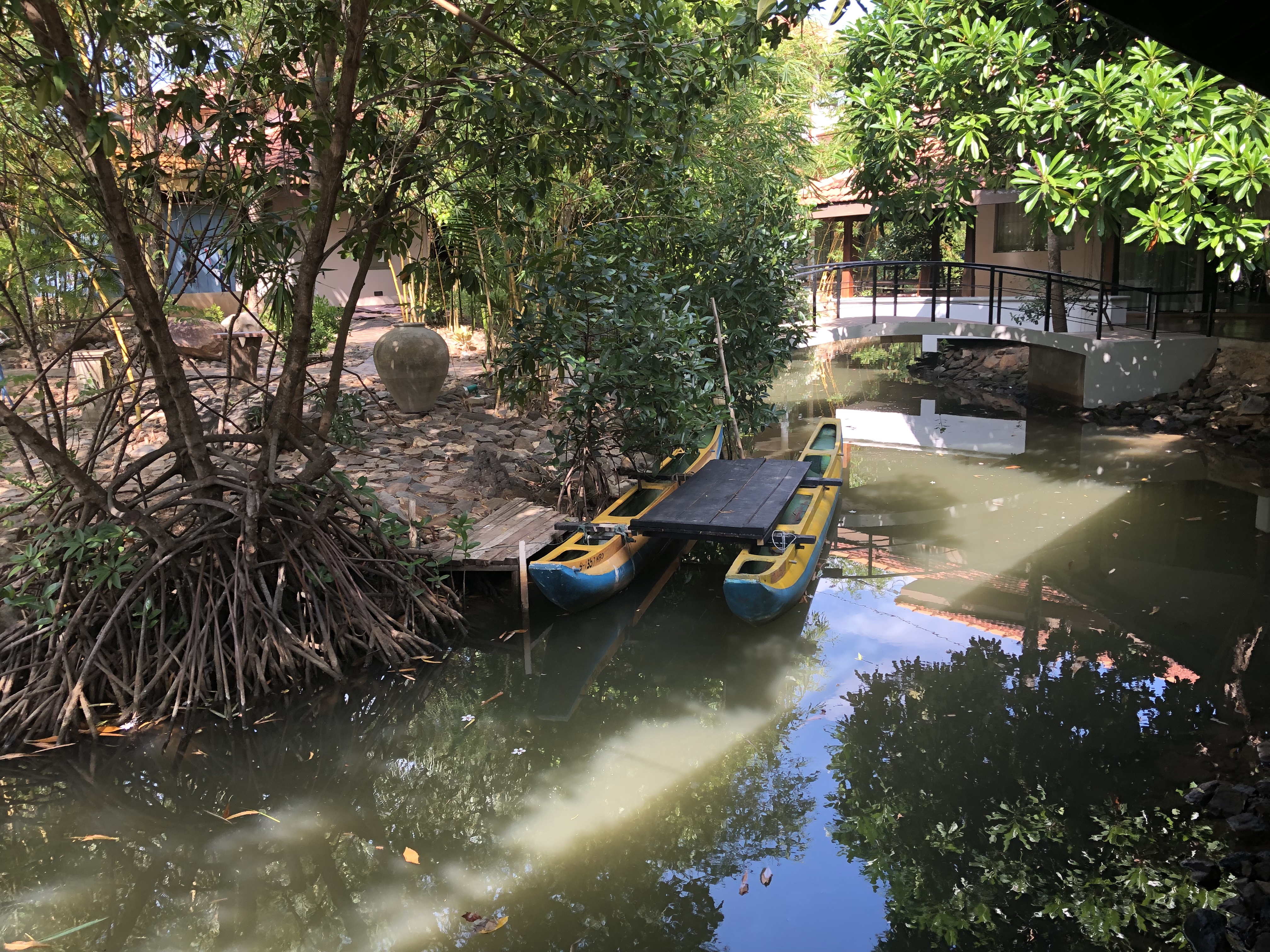
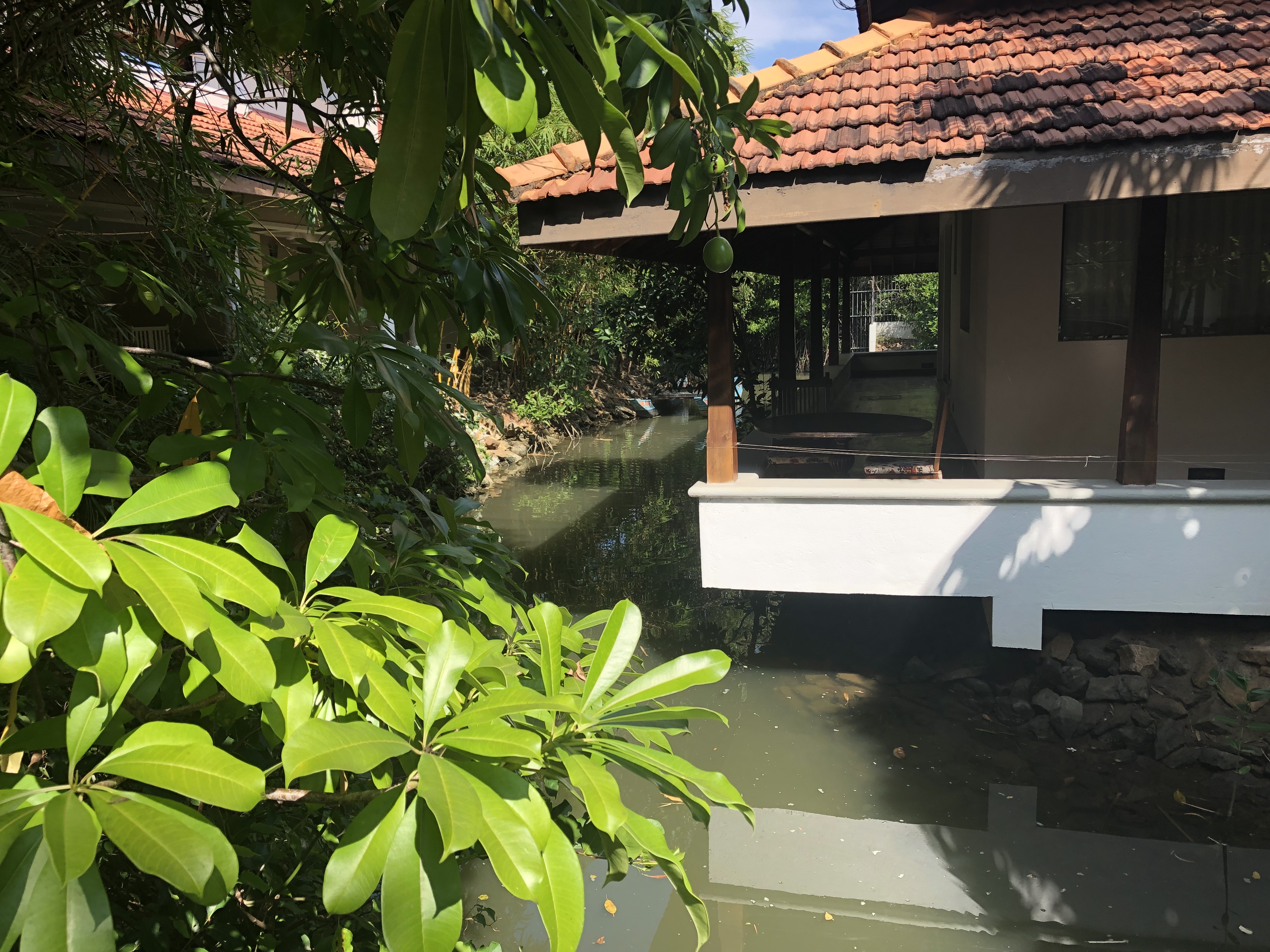
Two fluffy cats patrol in search of things they can capture, and people they can sit on – Mitzi would clearly have liked to spend the night with us on Wednesday:
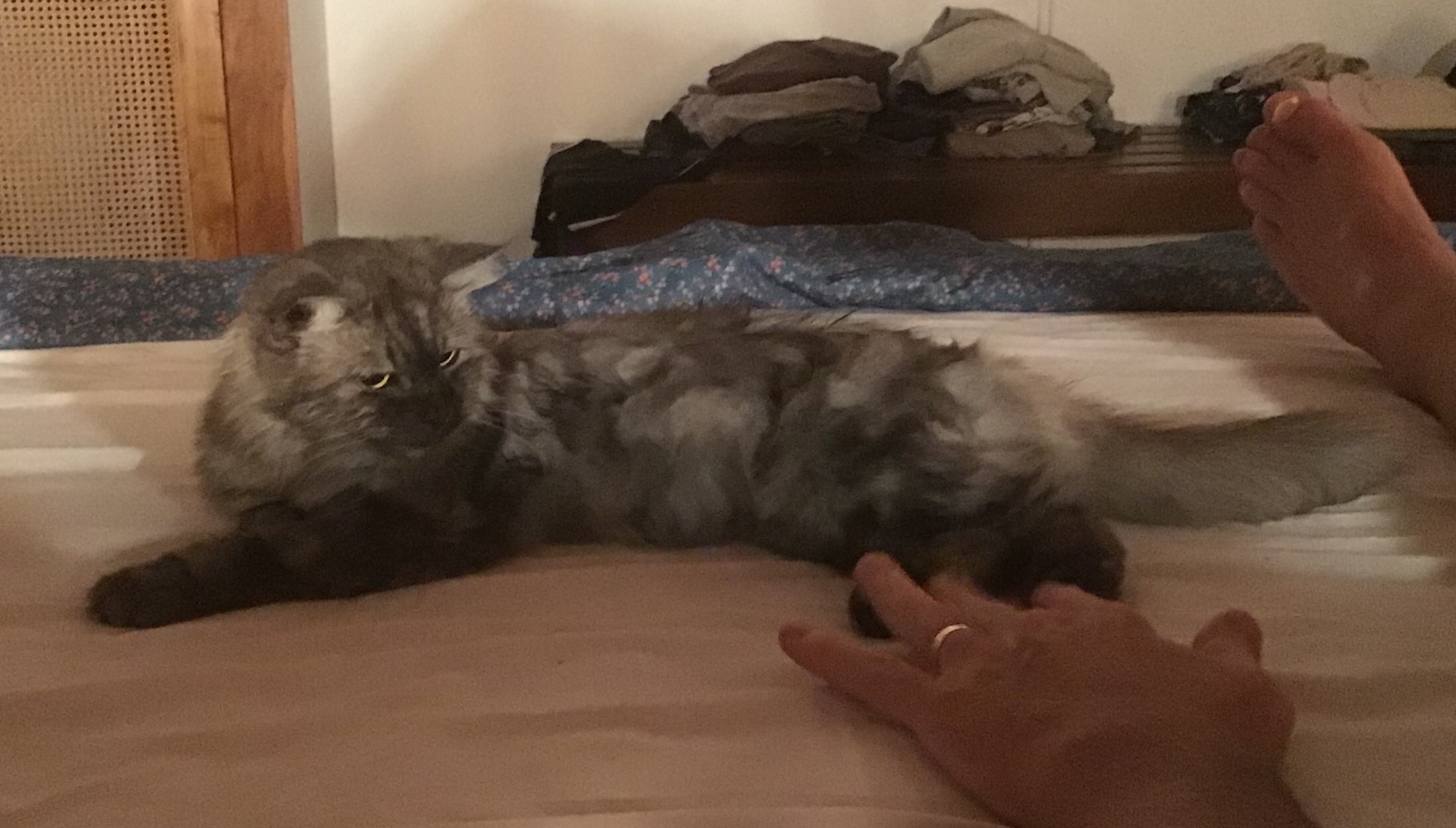
The Water Monitor we saw on our first day was a little too large for the cats, I suspect. It appeared, suddenly, by the pool, a few yards from our chosen sunbathing spot, glared around balefully for a few seconds and then disappeared down a hole by the pool. By the time I had reached for my camera I was already too late.
A well-kept convertible Morris Minor sits next to the owner’s accommodation!
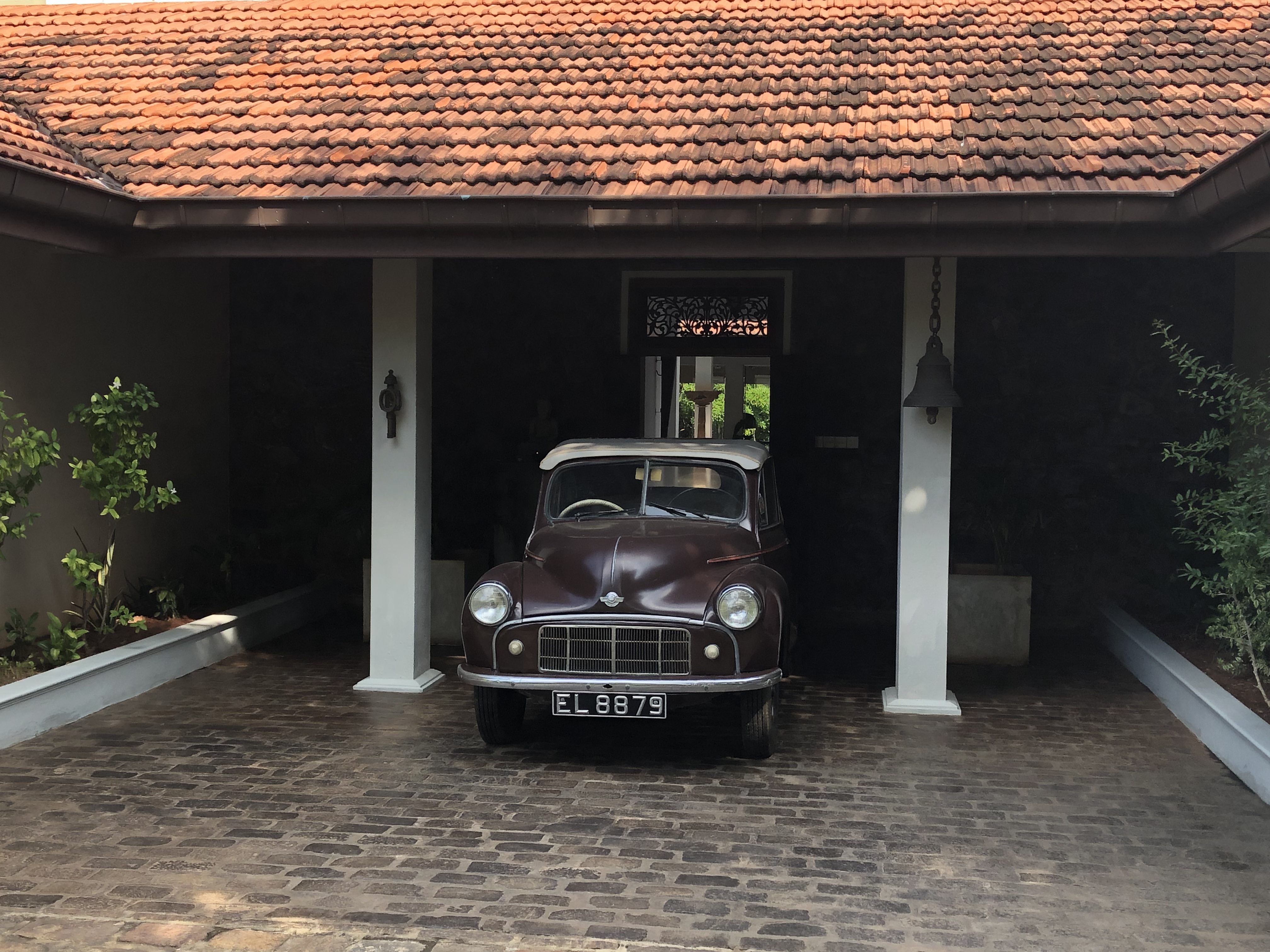
The differences between India and Sri Lanka seemed manifold. There is no obvious pollution in the air here, and the traffic seemed much more manageable (although I’m still not sure I want to drive locally). There were still tuktuks everywhere, but in this area they are almost universally a smart burgundy colour, and look very well maintained. It had been striking in India that women seemed to be absent from street life; we only really saw men out in public. Here the balance is more or less equal, women and men dressed colourfully in a spectrum ranging from traditional to western clothing.
What lovely, gentle people, though, with smiles that spread easily across their faces. I remember this from our last visit – it now seems utterly incongruous that such bitter internal strife raged in this beautiful place for so many years.
At the northern end of the lagoon two bridges cross the water where it changes from lagoon to sea. Hundreds of wooden (and some steel) fishing boats, mostly blue, were awaiting a change in the seasons in harbour.
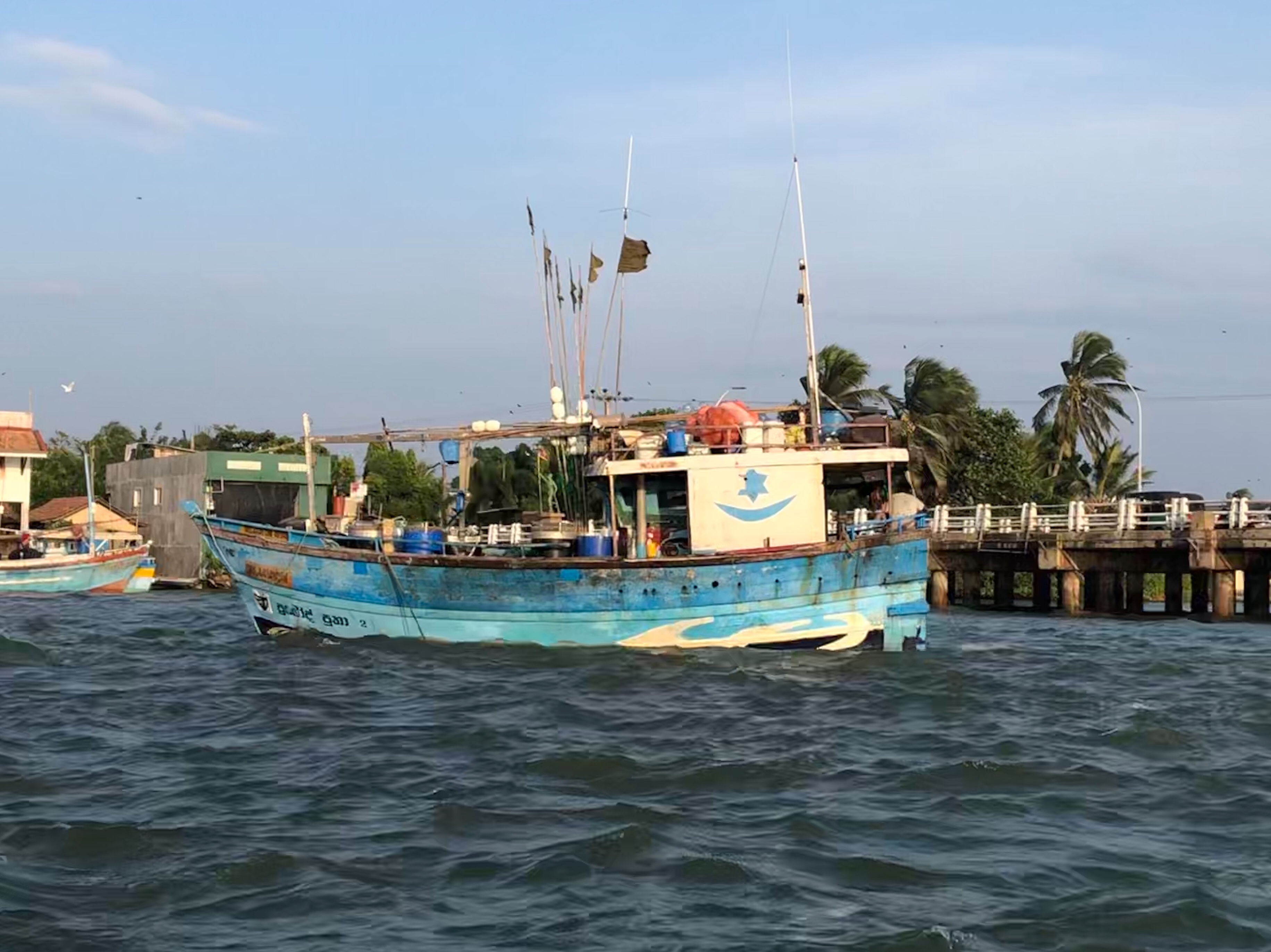
A small canal, lined with smaller blue fibre-glass boats, struck off in a northerly direction. The road to our villa passed numerous Christian churches, though Buddhism predominates in the country.
We didn’t go out much, to be honest! Villa Hundira was designed and constructed by a Swedish gentleman called Rolf some twenty years ago, and he now lives here with his Sri Lankan wife Indira. They are supported by a smiley, efficient staff of fourteen people, who seem to work long hours, but couldn’t have made us more welcome. The menu in the evenings ranges from Swedish Meatballs to Sri Lankan curries with String Hoppers. We ate the local dishes, to start with, although later on we tried some others to avoid repetition. In particular we loved Lamprais – a local rice-based dish served in a banana leaf, with a name derived, apparently, from the Dutch word lomprijst, which loosely translated means a packet of food. It was superb!
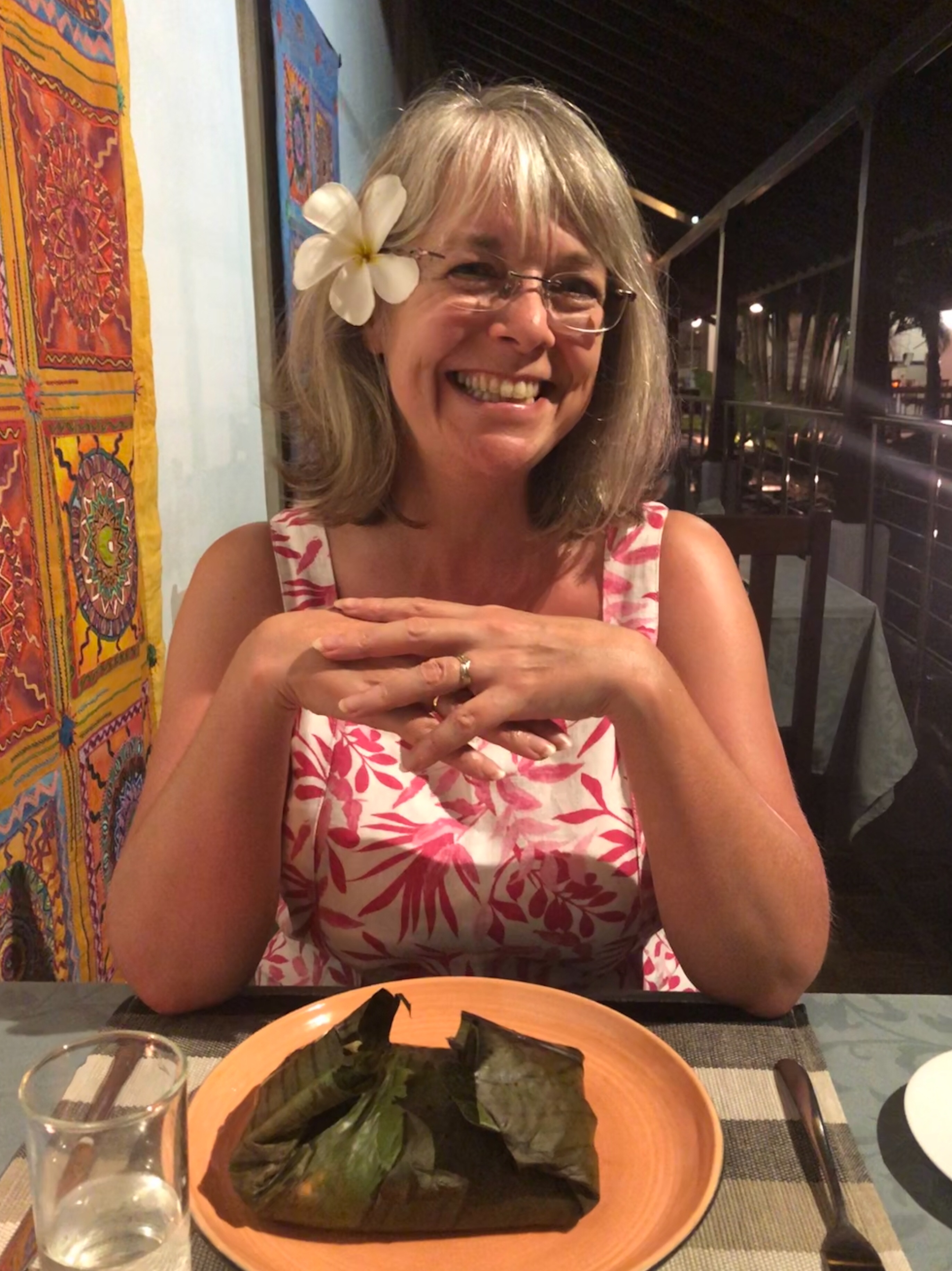
Our one excursion was out into the lagoon, in a small blue fibre-glass boat. It was a windy day, and the water was fairly choppy as we headed north towards the mangrove islands which occupy the northern margins of Negombo lagoon. At the first long island our captain pulled in by some mangroves and suddenly there were monkeys everywhere.
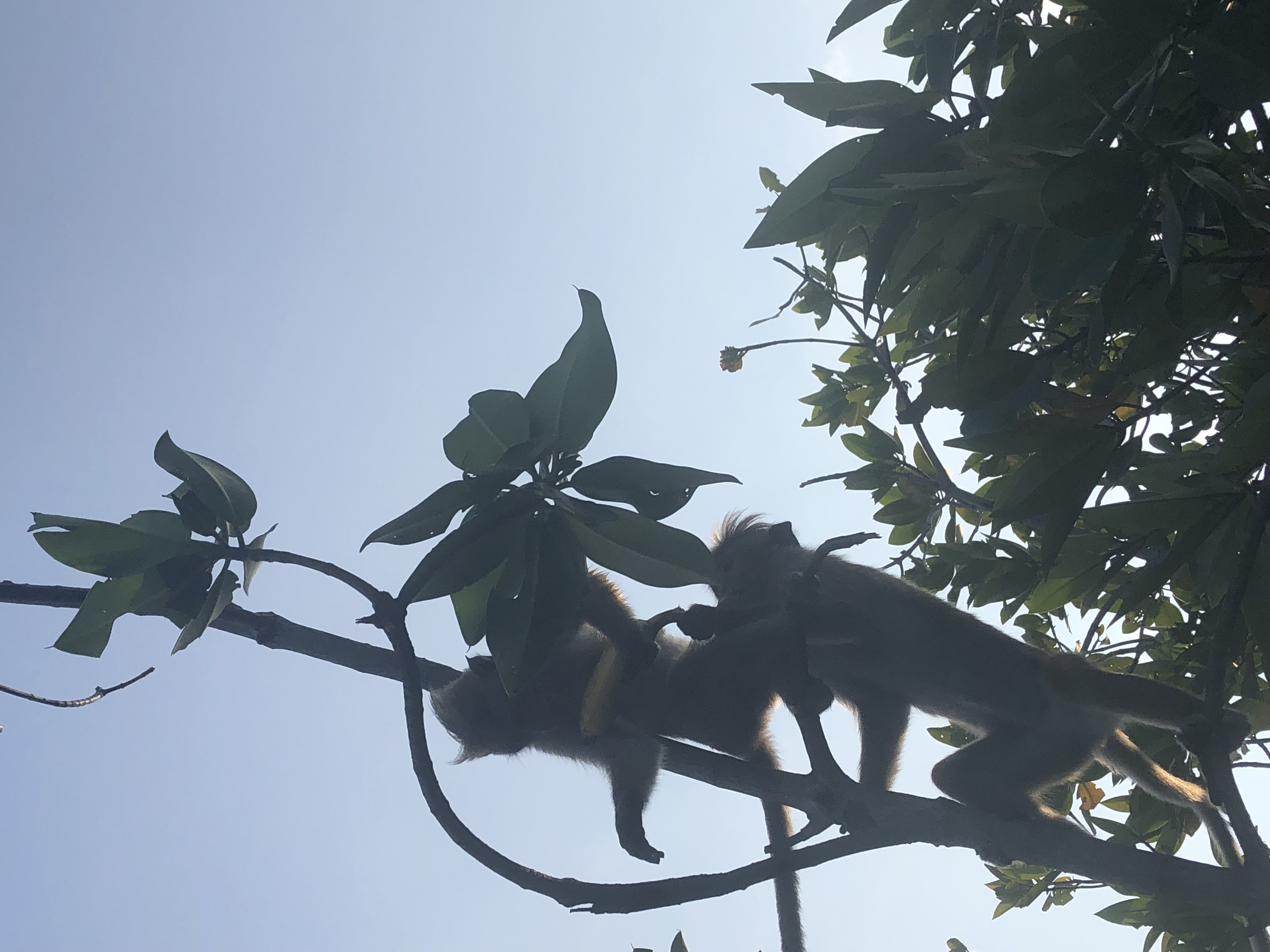
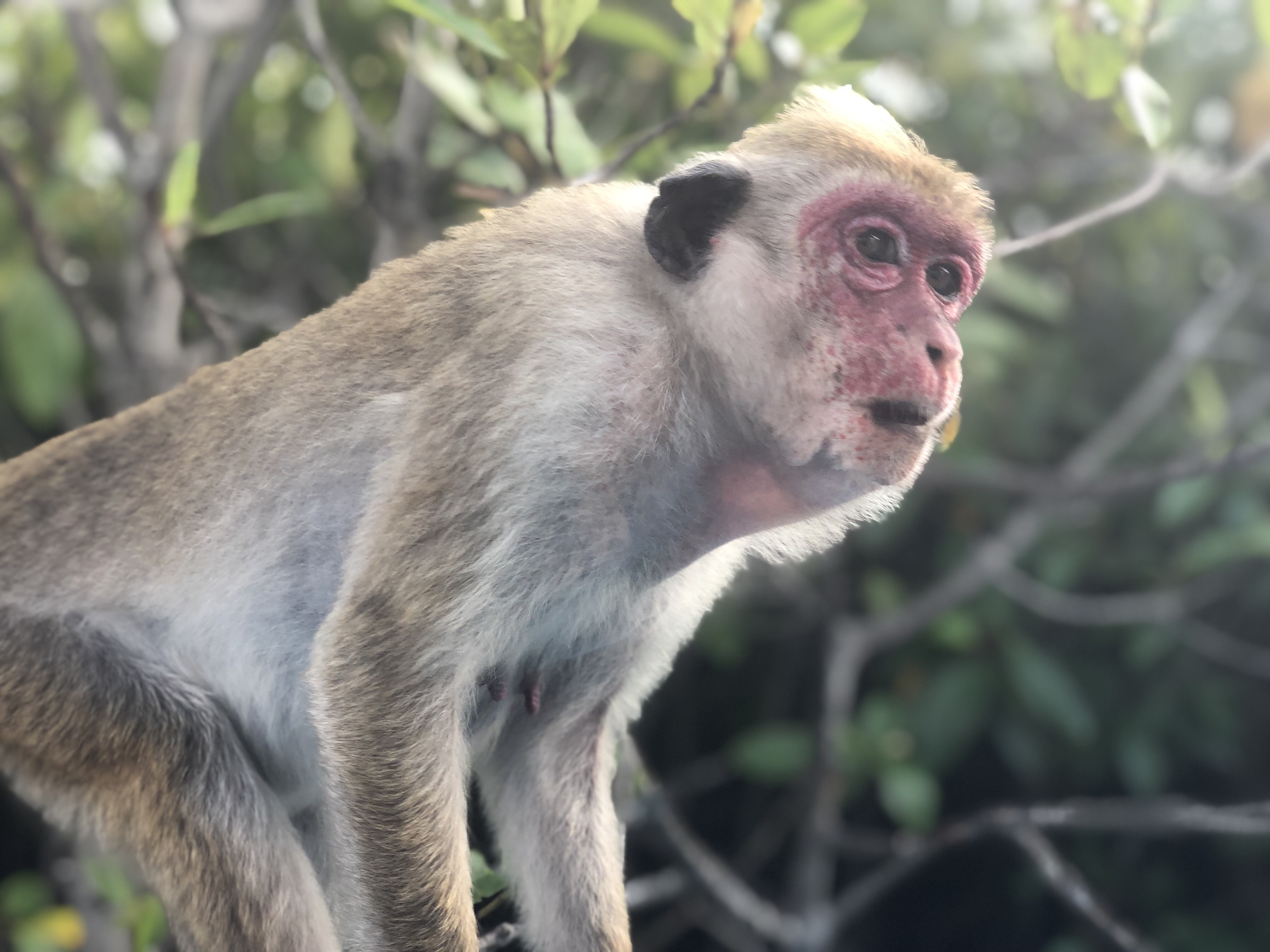
They were obviously used to such visits, and we had been given bananas and bread by the hotel with which to feed them. Although clearly very lively, they removed the food from our hands with some delicacy.
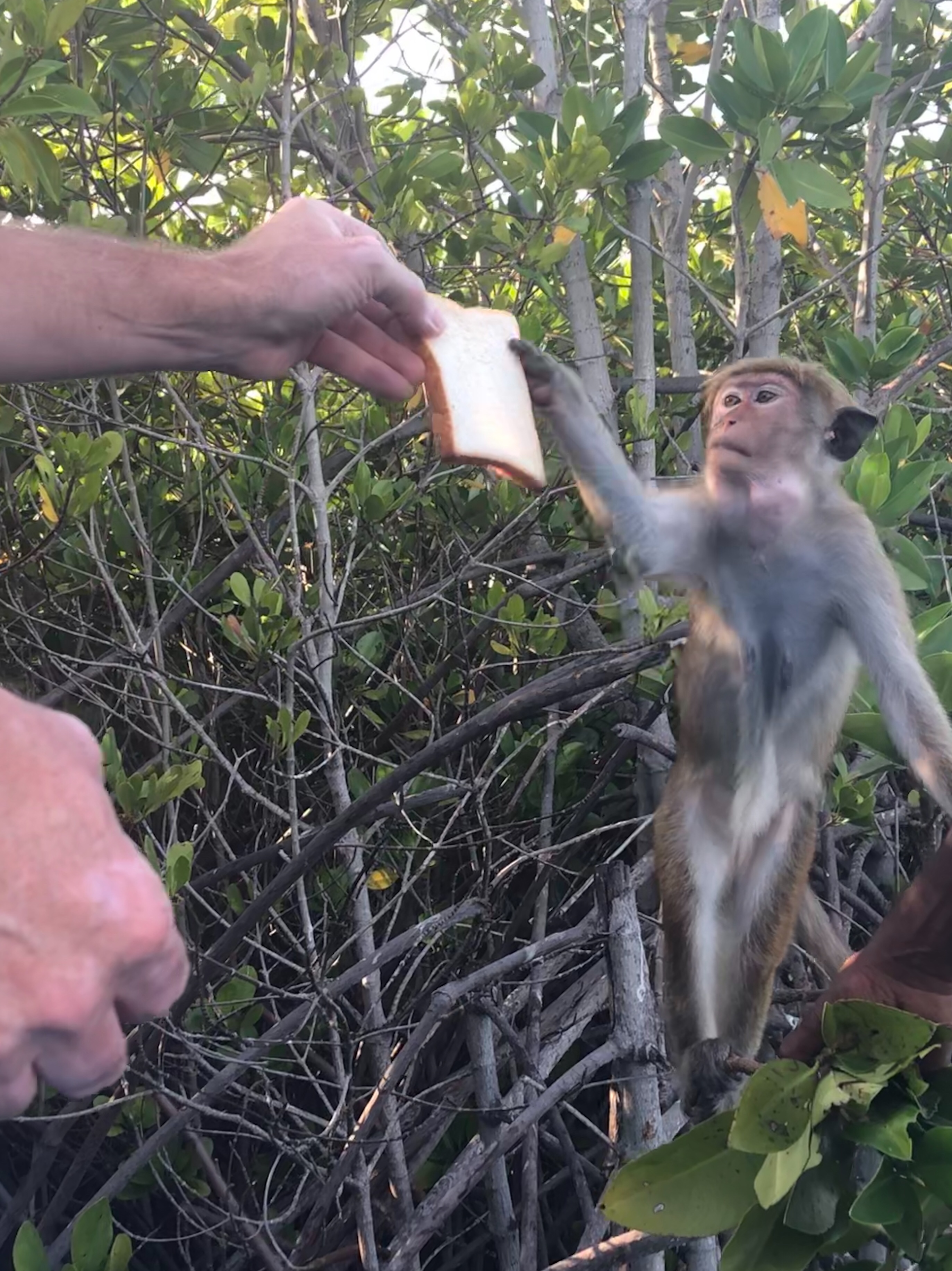
A youngster enjoyed bouncing up and down on the boat’s canopy.
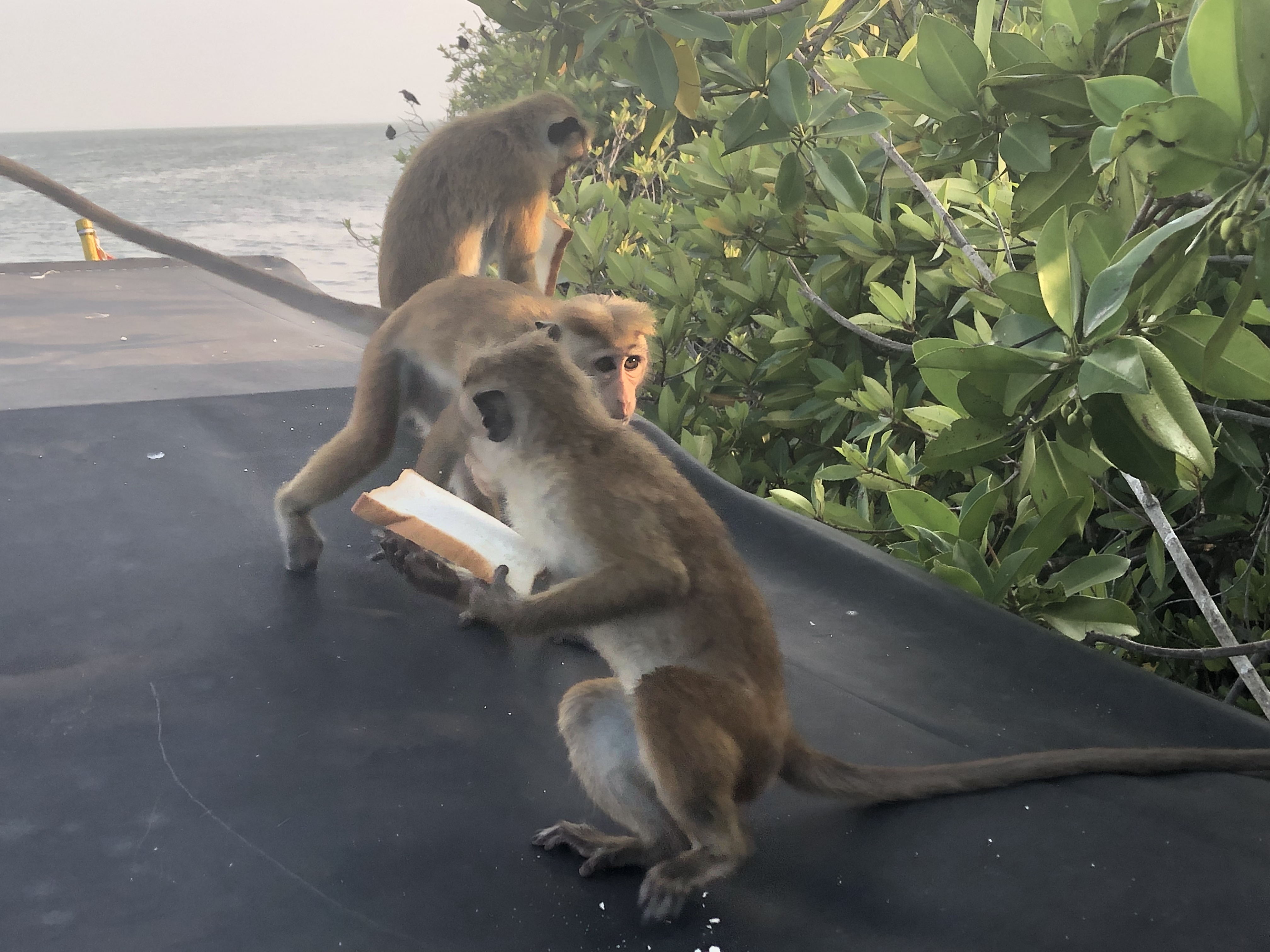
We were later told that these were mostly younger monkeys (although we spotted an older one keeping an eye on proceedings), and that the more mature monkeys which lived on the other side of the island tended to be grumpy!
As we headed further north there were herons everywhere! There was an abundance of other bird life too, but our captain spoke little English and our bird-spotting skills are woefully inadequate.
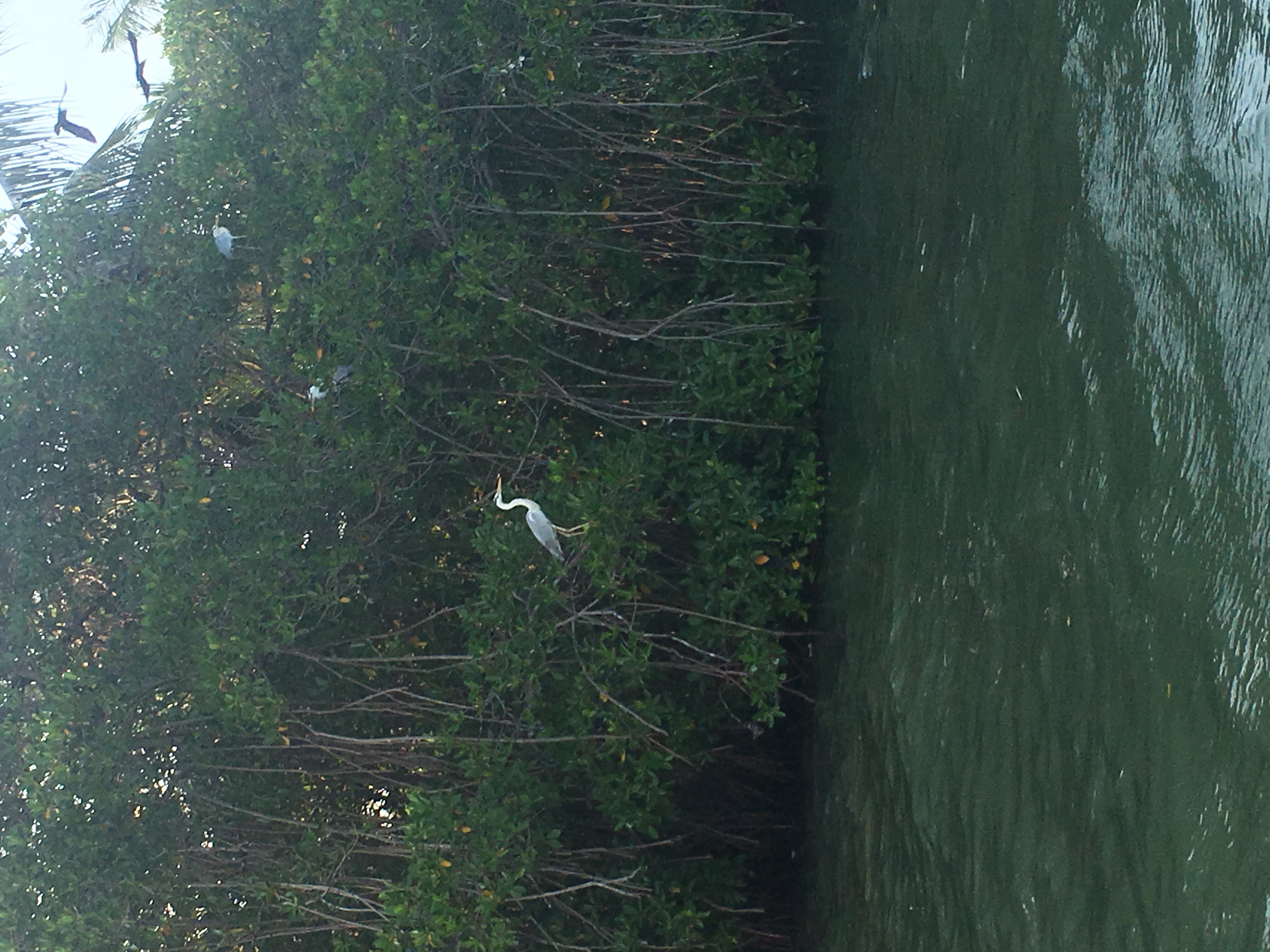
Eventually we turned around, pausing for a brief stop on a tiny island to consume fresh watermelon, brought along by our captain. There was a sobering sight on the edge of the lagoon – half of a fishing boat which had been destroyed in the tsunami of 2004. This area of Sri Lanka wasn’t as badly hit as the south, but there was obviously still much suffering.
We returned to the villa across the lagoon, with a smoother ride in this direction. The sun was beginning to set, giving us some wonderful vistas to the west.
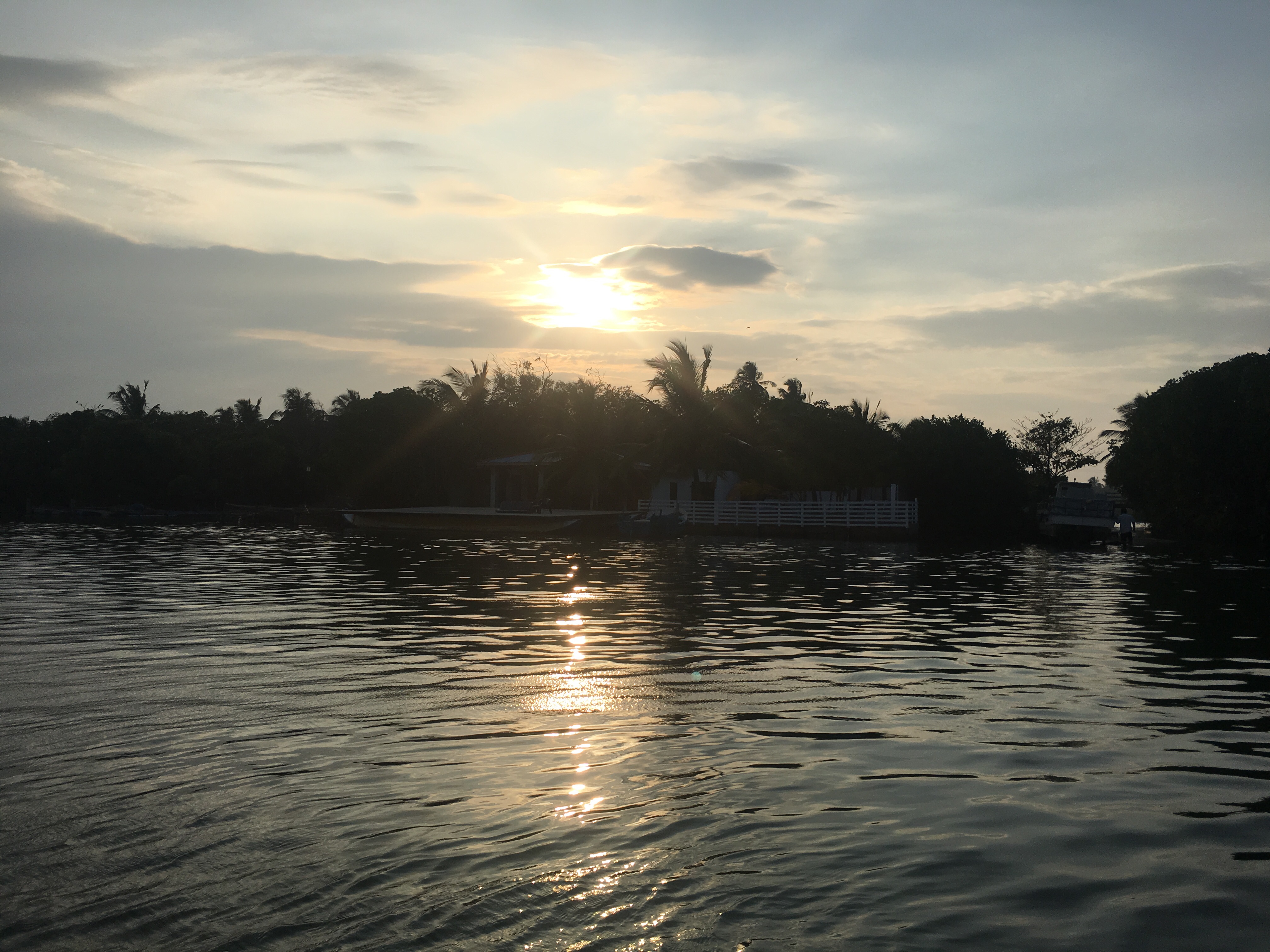
We passed several fishermen – apparently this is prime fishing territory for jumbo prawns.
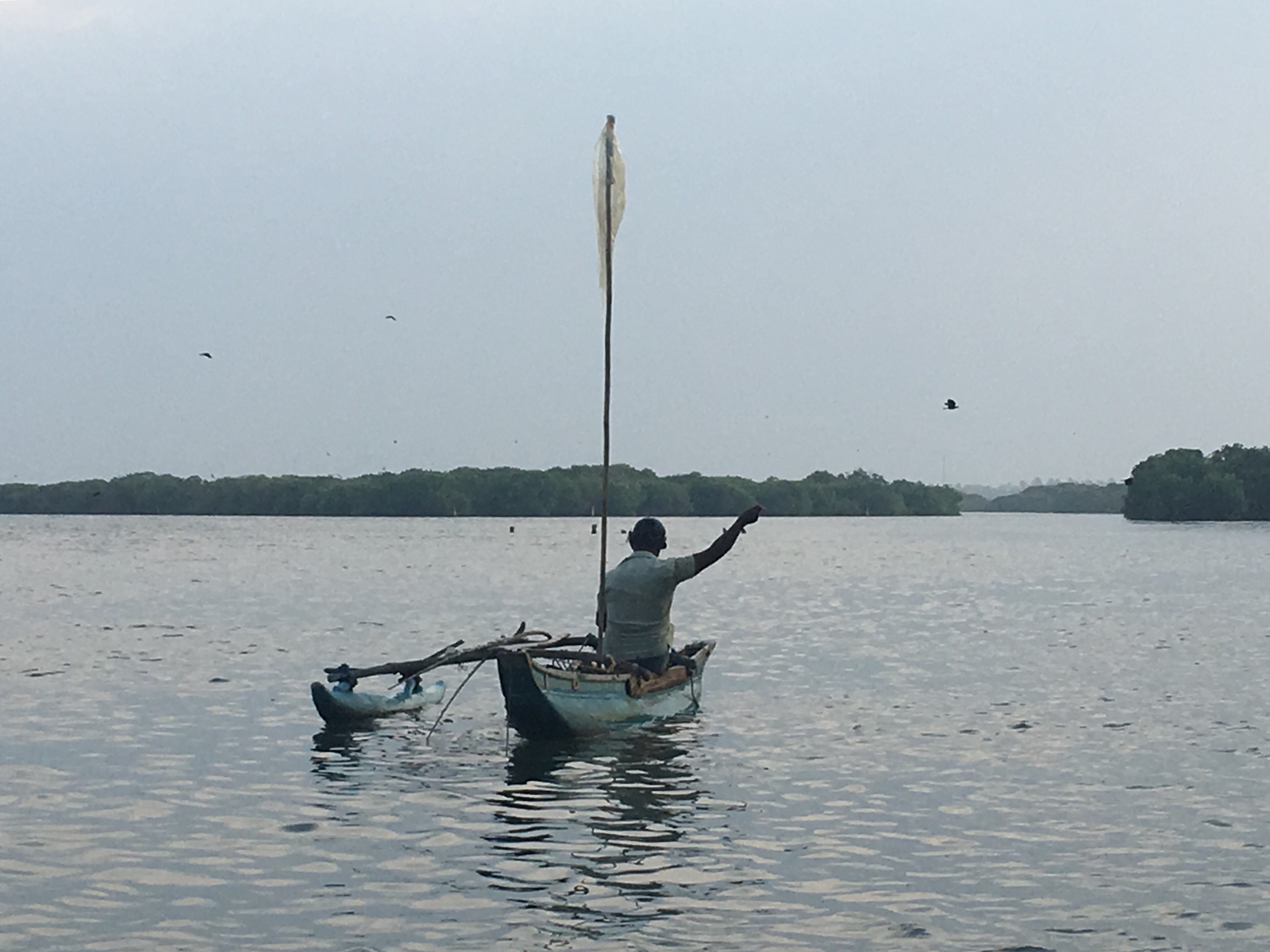
At night, relaxing with a glass of wine by the edge of the lagoon, we spotted the new moon. This close to the equator the ‘crescent’ part of the moon is at the bottom edge, another feature we remember from our previous visit. Our stay has been a joy – completely relaxing. After this we have visits to Singapore (two full days), Penang (three) and Sydney (three) before we arrive in New Zealand, so we’re likely to be very busy.
